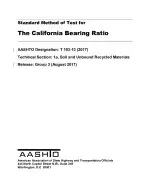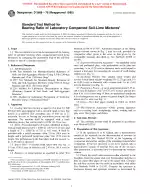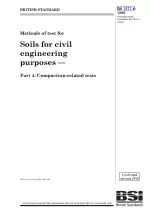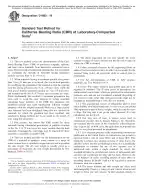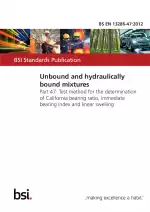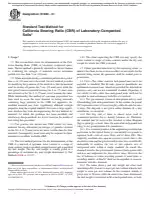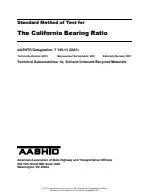AASHTO T 193-13 (2017) PDF Download
Standard EN SampleStandard Method of Test for The California Bearing Ratio
Also Known As:
AASHTO T 193-13 (2017) is a standard method of test that is used to determine the California Bearing Ratio (CBR) of pavement materials, specifically subgrade, subbase, and base/course materials. This test method is primarily designed for cohesive materials with maximum particle sizes less than 19 mm (¾ in.), but it can also be modified to test materials with larger particle sizes.
The test involves laboratory compacted specimens of the materials, and it is used to evaluate the strength properties of the materials. When materials with particle sizes larger than 19 mm (¾ in.) are tested, the gradation of the material is modified so that all particles pass through the 19.0-mm (¾-in.) sieve, while the total gravel fraction between 4.75-mm (No. 4) and 75-mm (3-in.) remains the same. It should be noted that modifying the gradation may result in different strength properties compared to the original material.
CBR results for materials with a significant percentage of particles retained on the 4.75-mm (No. 4) sieve are typically more variable than for finer materials. Therefore, more trials may be required to establish a reliable CBR for these materials.
The test method allows for the determination of the CBR at optimum water content or within a specified range of water content, based on a specified dry unit mass. The dry unit mass is usually expressed as a percentage of the maximum dry unit mass obtained from compaction tests such as T 99 or T 180. The water content and dry unit mass for which the CBR is desired should be specified by the agency requesting the test. Unless specified otherwise, or if it has been proven to have no effect on test results, all specimens should be soaked prior to penetration.
| Language(s) | English |
| File Size | 573.4 KB |

